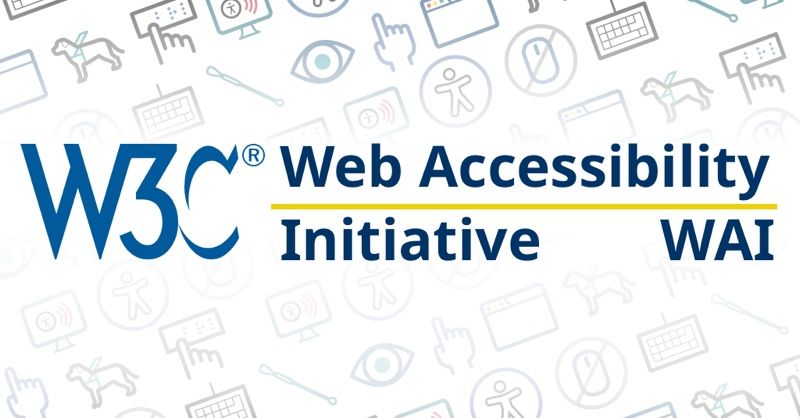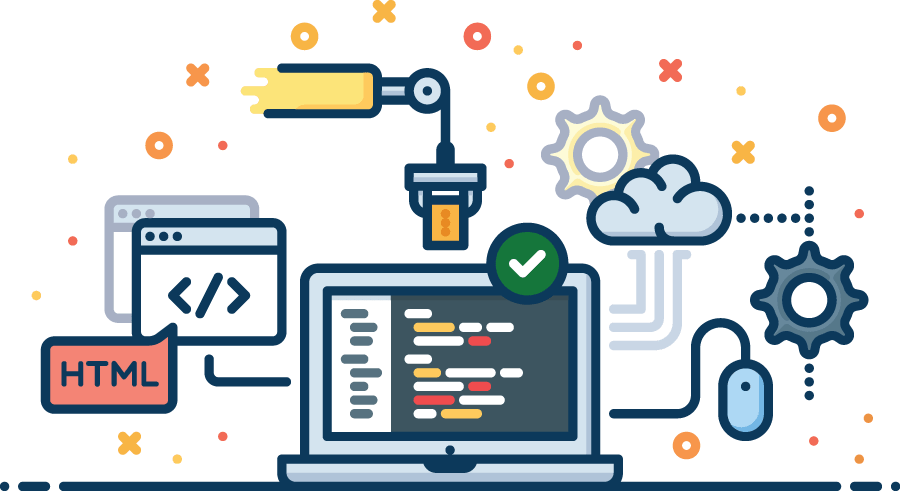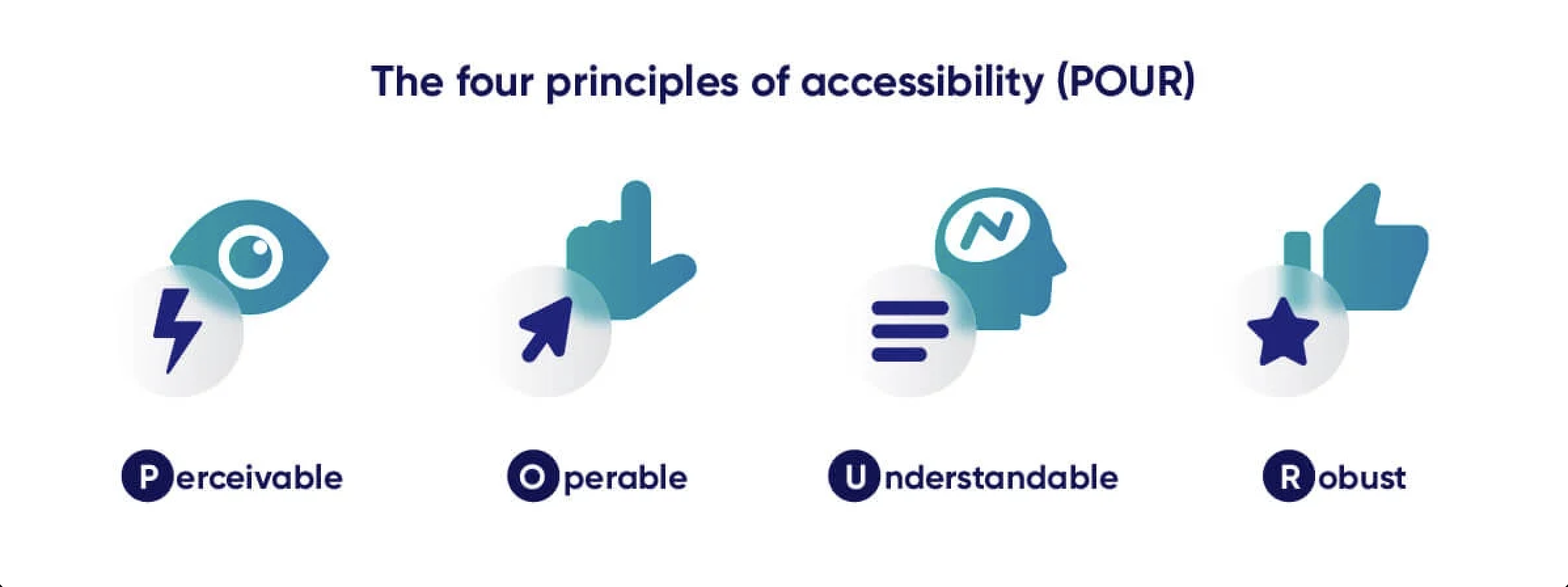Web Accessibility Standards and Guidelines: W3C WAI
Web Access for All: Part 2
Web accessibility is an incredibly important topic in today's digital landscape. It has become crucial to establish international standards and guidelines that developers and organizations must adhere to when creating web content. As part of my ongoing blog series, "Web Access for ALL," this second installment will focus on web accessibility standards and guidelines that are essential knowledge for designers, developers, organizations, and everyone interested in creating inclusive web experiences. If you haven't already, I encourage you to read the previous blog post titled "Understanding Accessibility: The Key to Inclusive Design," where I covered the introduction, types, and importance of web accessibility. It will provide a solid foundation for understanding the concepts discussed in this blog.
In this blog, we will delve into the importance of web accessibility standards and guidelines, focusing specifically on the Web Content Accessibility Guidelines (WCAG). The WCAG, developed and maintained by the World Wide Web Consortium's (W3C) Web Accessibility Initiative (WAI), serves as a fundamental resource for creating accessible websites. By adhering to these guidelines, developers can ensure that their websites are usable by individuals with disabilities.
Before we dive into WCAG, let's first explore the essential components of web accessibility. Understanding these components will provide a solid foundation for comprehending the different accessibility standards developed by the W3C Web Accessibility Initiative (WAI).
By familiarizing ourselves with web accessibility standards and guidelines, particularly the WCAG, we can take significant steps toward making the web more accessible and inclusive for all users.
Essential Components of Web Accessibility

Web accessibility is dependent on various components working together cohesively. Improvements in these components can significantly enhance web accessibility. Understanding these components is crucial for comprehending the different accessibility standards developed by the W3C Web Accessibility Initiative (WAI).
Web accessibility relies on the following components:
Content: This refers to the information present in a web page or web application, including text, images, and multimedia elements. It also includes the underlying code or markup that defines the structure and presentation of the content.
User-Agents: These are web browsers, media players, and other software that facilitate the rendering and interaction with web content. User agents play a critical role in ensuring accessibility by providing support for assistive technologies and adhering to accessibility standards.
Assistive Technology: Assistive technologies such as screen readers, alternative keyboards, and switches enable people with disabilities to access and interact with web content. They bridge the gap between the user and the digital interface, making it more accessible.
Users' Knowledge and Experiences: Users with disabilities bring their knowledge, experiences, and adaptive strategies to effectively use the web. Understanding user needs and accommodating different user requirements is essential for improving web accessibility.
Developers: Developers, including designers, coders, and authors, play a vital role in creating accessible websites. Their knowledge and implementation of accessibility standards significantly impact the overall accessibility of the web.
Authoring Tools: Authoring tools are software used to create websites. These tools can assist developers in producing accessible content by providing features and prompts that encourage adherence to accessibility guidelines.
Evaluation Tools: Evaluation tools, such as web accessibility evaluation tools, HTML validators, and CSS validators, aid in assessing the accessibility of web content. These tools help identify accessibility issues and guide developers in rectifying them.
By recognizing the importance of these components and their interplay, we can work towards improving web accessibility and ensuring that people with disabilities can access and engage with online content seamlessly.
Guidelines and Other Standards

The World Wide Web Consortium (W3C) Web Accessibility Initiative (WAI) plays a key role in developing web accessibility standards for the various components I mentioned above.
The Authoring Tool Accessibility Guidelines (ATAG) specifically address authoring tools. These guidelines provide recommendations to ensure that the software used to create websites supports the production of accessible content.
The Web Content Accessibility Guidelines (WCAG) 2 address web content accessibility and are widely used by developers, authoring tools, and accessibility evaluation tools. It offers comprehensive guidance on how to make web content more accessible, covering aspects such as text alternatives for non-text content, keyboard accessibility, and clear navigation.
The User Agent Accessibility Guidelines (UAAG) focus on web browsers and media players, encompassing certain aspects of assistive technologies. These guidelines aim to ensure that user agents provide accessibility features and functionalities, enabling users with disabilities to interact with web content effectively.
These accessibility guidelines are rooted in the fundamental technical specifications of the web and are developed in coordination with all W3C technical specifications, including HTML, CSS, SVG, SMIL, and more.
Additionally, W3C develops technical specifications that directly address accessibility, such as ARIA (Accessible Rich Internet Applications). ARIA defines a set of attributes and roles that enhance the accessibility of web applications, particularly those built using Ajax, HTML, JavaScript, and related technologies.
By establishing these guidelines and specifications, W3C WAI promotes a cohesive approach to web accessibility, fostering a more inclusive online experience for individuals with disabilities.
Understanding WCAG 2

The development of Web Content Accessibility Guidelines (WCAG) 2 is a collaborative effort undertaken through the W3C process, involving individuals and organizations from around the world. The aim is to establish a universal standard for web content accessibility that caters to the requirements of individuals, organizations, and governments on an international scale.
The WCAG documents provide detailed guidance on how to enhance the accessibility of web content for individuals with disabilities. The term "web content" generally encompasses the information presented within a web page or web application, including text, images, and sounds. It also includes the underlying code or markup that defines the structure and presentation of the content.
By following the WCAG, we the developers can ensure that the websites are accessible to a broader range of users, including those with disabilities. These guidelines serve as a valuable resource in promoting inclusivity and equal access to information and services across the web.
The Web Content Accessibility Guidelines (WCAG) standards are established and remain unchanged once they are published. WCAG 2.0 was released on 11 December 2008, followed by WCAG 2.1 on 5 June 2018. Currently, the WCAG 2.2 draft is in progress and is expected to be finalized in 2023.
The WCAG guidelines and Success Criteria revolve around four fundamental principles that form the basis for enabling individuals to access and utilize web content. These principles ensure that web content is:
Perceivable: Information and user interface components must be presented in a way that users can perceive. This means that the information should be available and not hidden from any of the user's senses.
Operable: User interface components and navigation must be operable, allowing users to interact with them. The interface should not require interactions that users cannot perform.
Understandable: The information and operation of the user interface must be understandable. Users should be able to comprehend the content and navigate through the interface without encountering barriers due to complexity or ambiguity.
Robust: Content must be robust enough to be reliably interpreted by various user agents and assistive technologies. It should remain accessible as technologies and user agents evolve.
If any of these principles are not met, individuals with disabilities may face difficulties in accessing and using the web.

Each principle is accompanied by guidelines and Success Criteria that address specific accessibility issues for people with disabilities. While there are general usability guidelines that enhance content usability for all users, WCAG 2.1 focuses specifically on guidelines that address barriers and challenges faced by individuals with disabilities. These guidelines aim to eliminate obstacles and ensure equal access to the web for all users.
Content that adheres to WCAG 2.1 is also considered to conform to WCAG 2.0, making it backward compatible. This means that a website or web content that meets the requirements of WCAG 2.1 will also meet the requirements of policies or guidelines that reference WCAG 2.0. In other words, if you aim to comply with both WCAG 2.0 and WCAG 2.1, you can focus on using the WCAG 2.1 resources and do not need to refer to WCAG 2.0 separately.
It's important to note that WCAG 2.0 and WCAG 2.1 are both existing standards and have their respective significance. WCAG 2.1 does not deprecate or replace WCAG 2.0. The World Wide Web Consortium (W3C) encourages us to use the most recent version of WCAG, which is currently WCAG 2.1. Staying up to date with the latest version ensures that you incorporate the most recent accessibility guidelines and recommendations into your web content.
At present, WCAG 3 is still in the draft stage and is not yet a finalized W3C Standard. It is expected to undergo further development over the next few years before reaching the status of a formal standard.
The purpose of WCAG 3 is to guide on enhancing web accessibility for individuals with disabilities. It encompasses a broader scope, including web content, applications, tools, publishing, and emerging technologies present on the web.
While WCAG 3 is still a work in progress, WCAG 2 remains the current and widely adopted standard for web accessibility. It is important to stay informed about the ongoing development of WCAG 3 as it progresses toward becoming a recognized industry standard.
By adhering to the success criteria outlined in WCAG, web content can be designed and developed in a manner that promotes accessibility for individuals with disabilities. The guidelines and success criteria offer clear guidance for creating an inclusive online environment.
Excellent! We have delved into the foundational aspects of web accessibility standards and guidelines, equipping us with the knowledge to enhance the accessibility of our content. By incorporating these standard guidelines, we can ensure that our website adheres to international accessibility standards, thus benefiting individuals with disabilities. I am confident that this blog has provided you with valuable insights that can foster positive change within our community. Thank you for joining me on this journey of learning and promoting web accessibility.